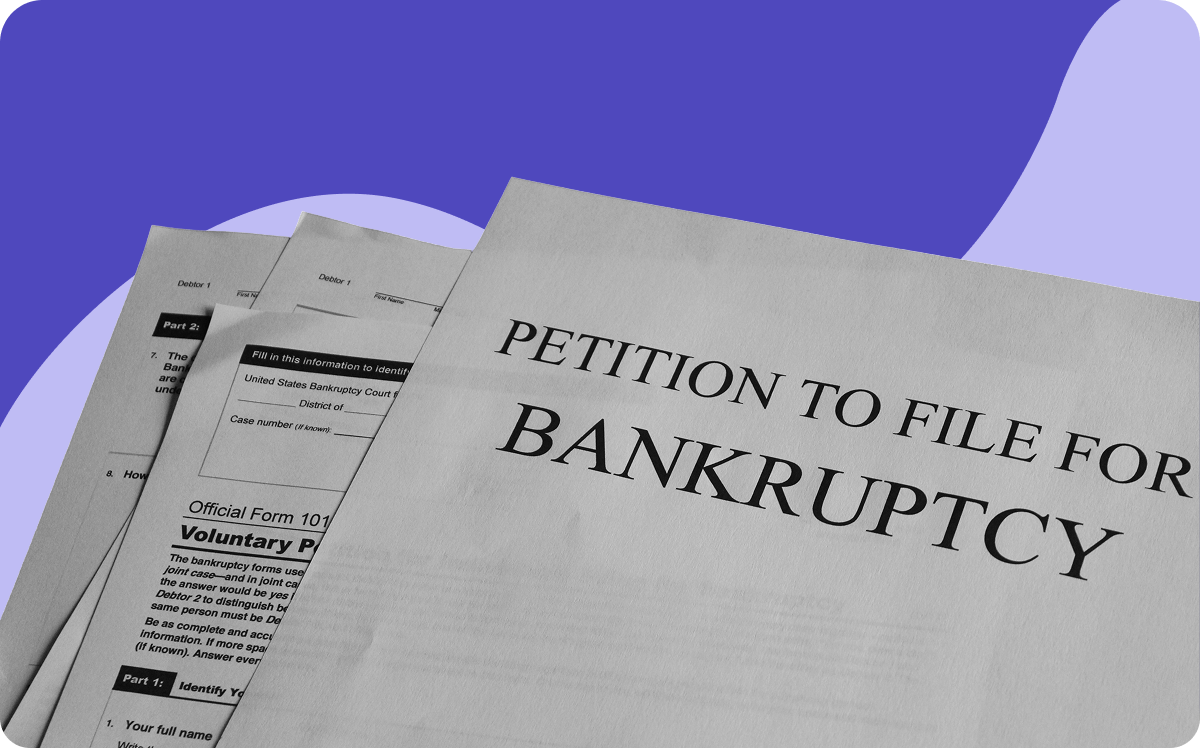Three Types of Bankruptcy in the UK & What to Know About Them

Bankruptcy tends to be seen as a dirty, no-no word that carries overly negative connotations — financial irresponsibility, failure, and overall ruin. But this is simply a misconception; bankruptcy isn't a form of shame or punishment, but rather a legal process designed to help those in financial distress. There are three main forms of bankruptcy, or rather financial insolvency solutions, that are recognized in the UK: Individual Voluntary Arrangement (IVA), Debt Relief Order (DRO), and legal declaration of insolvency (aka bankruptcy.)
These three affect tens of thousands of Brits each year — around 118,000 in 2024 alone — so let's explore what these terms mean, their implications for future financial health, and why you should see it as a step toward a new beginning rather than a failure.
Formal Bankruptcy Order
In other countries, particularly in the US, bankruptcy applies to both individuals and businesses. But this is not the case in the UK, where it only applies to individuals. A formal bankruptcy order in the UK acts as a legal declaration of financial insolvency for people with significant debt and no realistic way to repay it.
If you owe £5,000 or more, you can apply for bankruptcy yourself online via the Insolvency Service or have a creditor apply for it on your behalf. A trustee is then assigned to you who will help you sell off any non-essential assets to repay as much of the debt as possible. This could include valuable collections, vacation homes, second cars, etc. In severe situations, it is possible that selling off secured assets is necessary. Additionally, your wages may be garnished for up to three years if possible. During this time, your bank accounts could be frozen and your credit rating will be seriously impacted for the near future.
But, it's not all doom and gloom — the upside is that the entire process lasts around one year and then you are no longer liable for your debts.
Here are some other pros and cons of filing a formal bankruptcy order:
It may not sound pretty, but bankruptcy is a very direct route to debt relief if you're feeling suffocated by unmanageable debt.
Individual Voluntary Arrangement (IVA)
IVAs are available to people who owe over £6,000 to multiple creditors, but can still afford to make monthly payments. This is in regards to unsecured debts like credit card debt, overdrafts, personal loans, utility bills, etc. Essentially, an Insolvency Practitioner (IP) will pore over your financial history, employment status, etc. to determine what you can actually afford to pay and when. Once they draw up the proposal, they send it to your creditors, who then vote on whether they agree to the terms. If 75% of your creditors approve it, you may then proceed to the payment schedule.
During the payment schedule, you'll make a singular monthly payment to the IP who then distributes it to your creditors according to the agreed-upon terms. Once your IVA term ends, the remainder of your debt is written off and you're scot-free.
Debt Relief Order (DRO)
DROs are the cheapest form of insolvency, designed for low-income individuals who own few assets, have smaller debts, but also don't qualify for bankruptcy or IVA. Keep in mind that they can only cover unsecured debts.
While thresholds vary in Northern Ireland, residents of England and Wales can file a DRO if they have less than £30,000 in debt, less than £75 per month in disposable income, and own assets under £2,000 total value.
You cannot apply for a DRO yourself, but instead must contact an approved debt advisor who will do it on your behalf. If approved, your debts are frozen for one year; afterward, if your financial situation hasn't changed, your debts are written off entirely.
DROs are basically a way of wiping your debt clean, but because they are meant for those experiencing extremely dire circumstances, the requirements are stringent and it is rare to get approved.
Improve Your Financial Habits with Pave
While bankruptcy isn't the end, but rather a new beginning toward healthier finances, it's important to understand that these situations can be avoidable by improving spending habits and being more involved with your finances.
And the Pave app can help!
Pave is an award-winning credit-builder app that actively works with you to help you build your credit score. No hard credit checks required. In addition, Pave will help you keep on top of your finances by giving you personalised credit fixes, bill reminders and much more.
To learn more and see why hundreds of thousands of people across the UK have turned to Pave to improve their credit score, download the app today. Available on App Store and Google Play, or sign up online.




